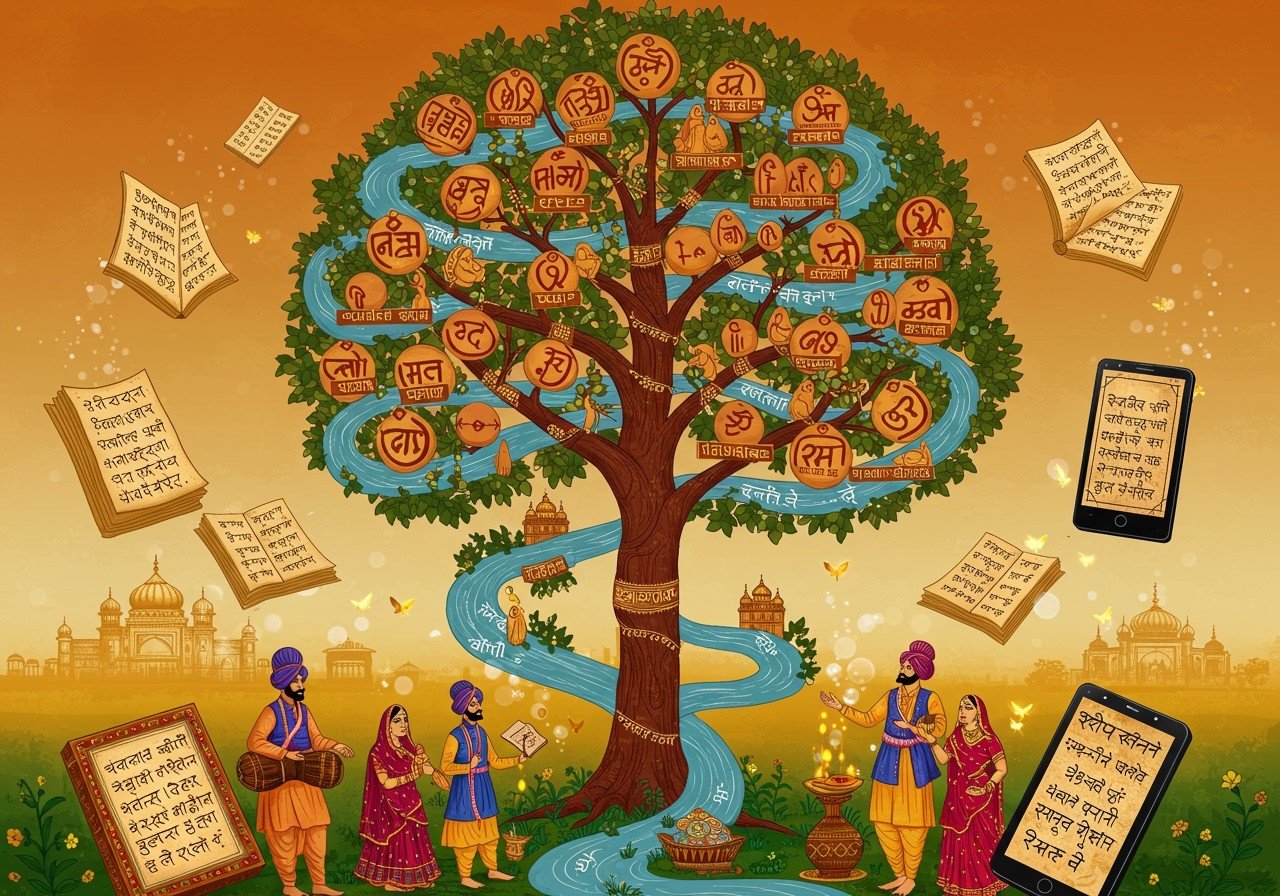
The Punjabi language boasts a rich history, reflecting the vibrant culture and traditions of the Punjab region. From ancient civilizations to modern dialects, its evolution is a captivating narrative. This article delves into Punjab’s linguistic heritage, exploring its origins, development, and cultural significance.
Punjab’s Linguistic Heritage
Deeply interwoven with Punjab’s cultural fabric, the Punjabi language showcases influences from various eras and civilizations. Its journey through time reveals a tapestry of linguistic exchange and evolution.
Historical Origins
Punjabi’s roots trace back to the ancient inhabitants of the Punjab region, including the Indus Valley Civilization. The Vedic period saw significant Sanskrit influence, and the Mauryan Empire further enriched the linguistic landscape with Prakrit languages. Islamic invasions introduced Persian and Arabic elements, adding to the language’s diversity. Regional dialects emerged during the medieval period, and the rise of Sikhism in the 15th century significantly promoted Punjabi’s widespread use.
Recognition Based on Language
Punjab’s linguistic identity gained recognition during the Punjabi Suba Movement in the mid-20th century, leading to the reorganization of Indian states in 1966. The creation of modern Punjab, based on linguistic criteria, had profound political and cultural implications. This recognition helped preserve and promote the Punjabi language, strengthening Punjab’s identity.
Evolution of Punjabi
Punjabi’s journey through time reflects its adaptability. From Old Punjabi in ancient times to Middle Punjabi during the medieval period, the language has constantly evolved. British colonial rule introduced English influences, further shaping its development. Post-independence, Modern Punjabi emerged, incorporating elements of globalization and technology. Contemporary dialects continue to evolve, reflecting the dynamic nature of language.
Modern Dialects
Today, Punjabi encompasses a diverse range of dialects, each with unique features and geographical distribution. Major dialects include:
- Majhi: Predominantly spoken in central Punjab, Majhi serves as a prominent dialect, influencing the standardized form of the language.
- Malwai: Primarily found in southern regions of Punjab, Malwai exhibits distinct phonetic and grammatical characteristics.
- Doabi: Common in the areas between the Beas and Sutlej rivers, Doabi represents a transitional dialect, sharing features with both Majhi and Malwai.
- Pothwari: Spoken in northern Punjab, including areas of Pakistan, Pothwari stands out with its unique vocabulary and pronunciation.
Migration and urbanization contribute to the emergence of new dialects, highlighting the ongoing evolution of Punjabi. Preservation efforts are crucial for maintaining the richness and diversity of these dialects, which play a vital role in communication and cultural identity.
Cultural Significance
Punjabi holds immense cultural value, deeply embedded in daily life, rituals, traditions, and festivals. It serves as the heart of folk music and dance, resonating through generations. Sufi poetry and Bhakti songs have enriched its literary history. Punjabi cinema and literature are powerful mediums of cultural expression, reflecting the region’s identity. Educational institutions play a key role in promoting the language.
Given the significance of Punjabi culture and traditions, poojn.in offers a wide variety of products that cater to these practices. You can find items such as Bel malas, guggal for dhoop, and kora dhotis, all essential for various rituals and ceremonies. These products are carefully selected to ensure authenticity and quality, reflecting the rich heritage of Punjab.
Conclusion: Celebrating Punjab’s Linguistic Legacy
The story of Punjabi is a testament to its resilience and adaptability. From ancient origins to modern dialects, it remains a vital part of Punjab’s identity and cultural pride. Recognizing and preserving this linguistic treasure is essential for maintaining the region’s cultural heritage. Each dialect and word carries the essence of Punjab’s traditions and history. As we celebrate this legacy, let us cherish and promote this beautiful language, honoring its past and nurturing its future.
FAQs on Punjab’s Linguistic Heritage
Where is Punjab located? Punjab is a region spanning northern India and eastern Pakistan, divided into Indian Punjab and Pakistani Punjab.
When did Punjab gain recognition based on language? Punjab gained recognition based on language during the 1966 reorganization of Indian states.
What is Punjab’s official language? In India, Punjabi is the official language of Punjab, written in Gurmukhi script. In Pakistani Punjab, Punjabi is widely spoken, but Urdu is the official language.
Does Punjabi have different dialects? Yes, Punjabi has several dialects, including Majhi, Malwai, Doabi, and Pothwari, each with unique features and regional variations.
How did Punjabi’s ancient origins develop? Punjabi’s ancient origins developed through centuries of cultural exchange and influence from various civilizations, including the Indus Valley Civilization and Aryan settlers.
Why is Punjabi important to Punjab’s cultural heritage? Punjabi is integral to Punjab’s cultural heritage as the primary means of communication, reflecting its history, traditions, and social customs.
Which script is used for writing Punjabi in India? The Gurmukhi script, developed by Sikh Gurus, is used for writing Punjabi in India, primarily for religious and literary texts.
Is Punjabi taught in schools in Punjab? Yes, Punjabi is taught in schools in Punjab, India, as a compulsory subject up to a certain grade, ensuring students learn to read, write, and speak the language.
Explore a wide range of puja essentials and cultural products at poojn.in, India’s leading online store for cultural and religious goods.


